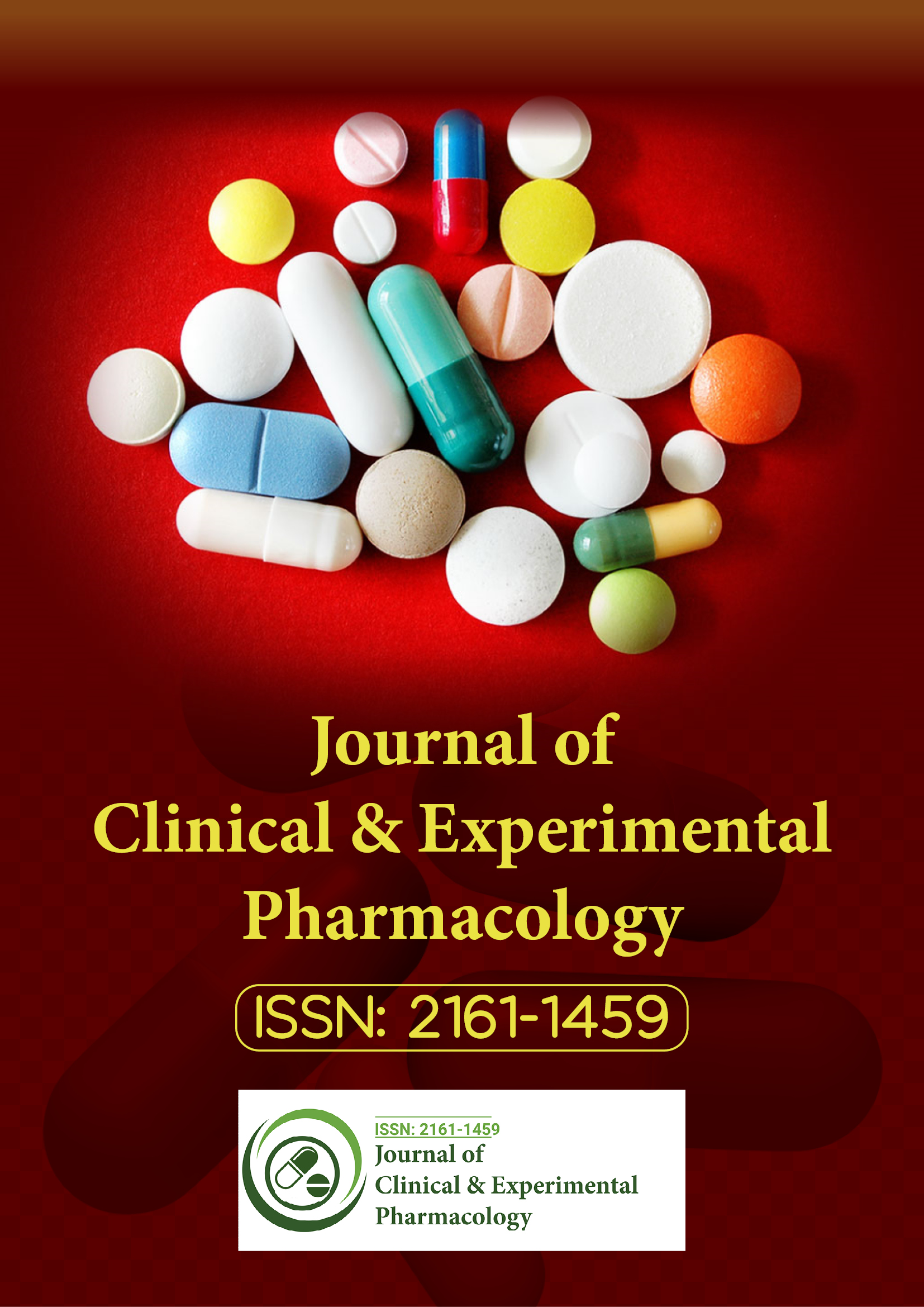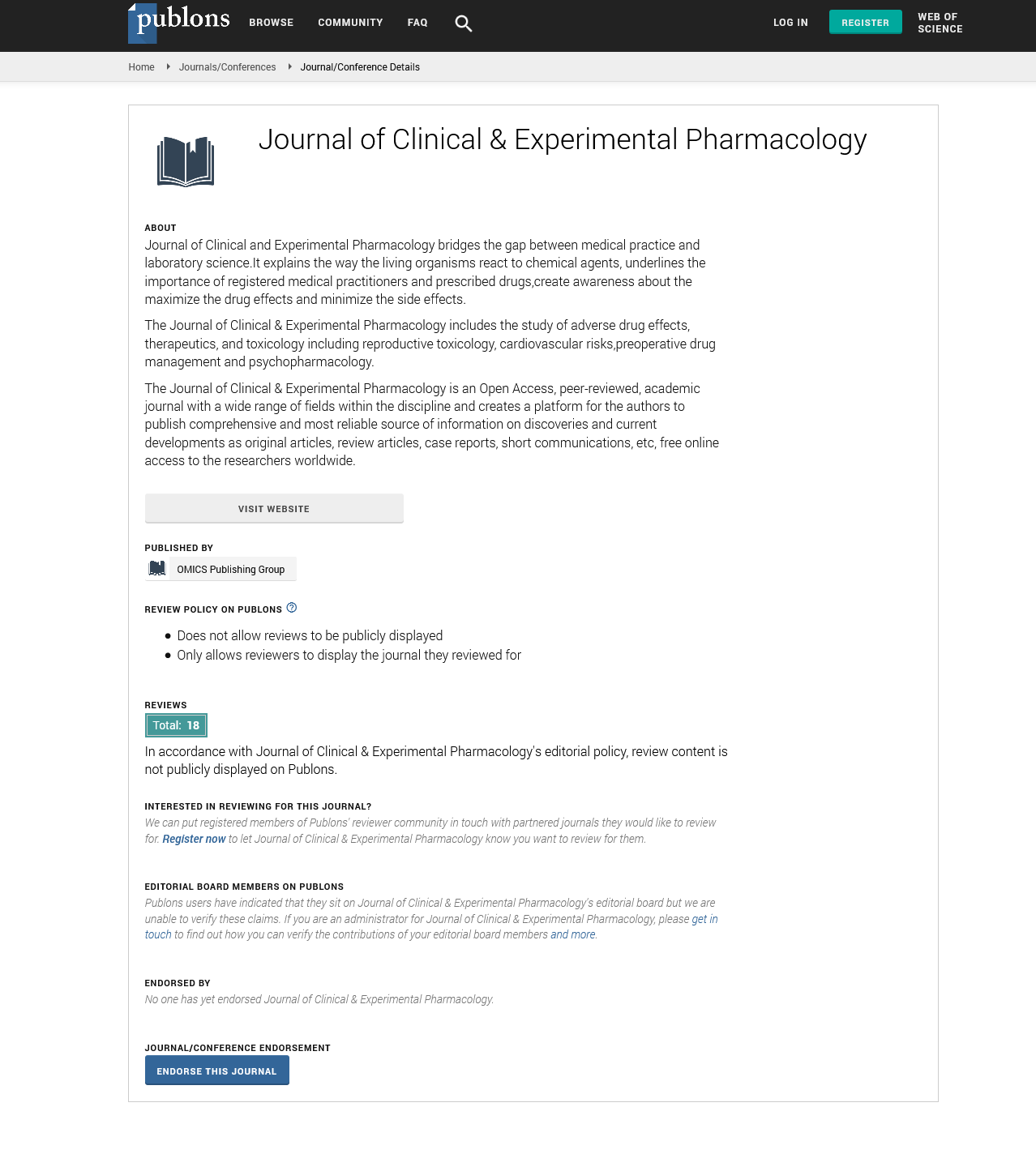Indexed In
- Open J Gate
- Genamics JournalSeek
- China National Knowledge Infrastructure (CNKI)
- Ulrich's Periodicals Directory
- RefSeek
- Hamdard University
- EBSCO A-Z
- OCLC- WorldCat
- Publons
- Google Scholar
Useful Links
Share This Page
Journal Flyer

Open Access Journals
- Agri and Aquaculture
- Biochemistry
- Bioinformatics & Systems Biology
- Business & Management
- Chemistry
- Clinical Sciences
- Engineering
- Food & Nutrition
- General Science
- Genetics & Molecular Biology
- Immunology & Microbiology
- Medical Sciences
- Neuroscience & Psychology
- Nursing & Health Care
- Pharmaceutical Sciences
Low-dose multi target suppression of cardiac ischemia/reperfusion pathology for improved physiological outcome
World Congress on Pharmacology
July 20-22, 2015 Brisbane, Australia
Grzegorz Sawicki
Keynote: Clin Exp Pharmacol
Abstract:
Although the full molecular basis for myocardial injury triggered by Myocardial Infarction (MI) or oxidative stress following ischemia/reperfusion (I/R) remains unknown, contractile protein degradation by proteolytic enzymes appears to beinvolved. This theory is supported by discoveries from my laboratory and others: (1) During I/R, matrix metalloproteinase-2 (MMP-2) activity is increased and degrades contractile proteins, including cardiac myosin light chain 1 and 2 (MLC1 and MLC2); (2) I/R triggers chemical modifications such as phosphorylation and nitration/nitrosylation of contractile proteinsthat increase their degradation by MMP-2. More recent evidence in my lab shows that, in addition to the pathological role of MMP-2 in I/R, MMP-2 can also regulate MLC levels under physiological conditions. I have evidence showing that robust inhibition of MMP-2 activity increases MLC levels (impairing MLC turnover) resulting in increased contractility above homeostatic levels (normal). This emphasizes the importance of only targeting pathological activity while maintaining physiological homeostasis. I have also shown that I/R increases phosphorylation and nitration/nitrosylation of MLC proteins leading to increased degradation by MMP-2. These MLC modifications play important physiological roles in addition to targeting the protein for degradation. Nitration of MLC has been reported in the process of vascular aging, and the phosphorylation of MLC2 controls the sensitivity of myofilaments to calcium in the regulation of heart contractility. Thus, maintaining thephysiological activity of MMP-2 and functional MLC modifications while simultaneously providing protection from I/R is a difficult set of tasks. I suggest, that in addition to the existing approaches in clinical practice for protection and treatment of heart injury from MI or I/R; simultaneous pharmacological suppression of MMP-2 activity and MLC nitration/nitrosylation/phosphorylation will provide improved protection of the heart from ischemic injury while limiting drug associated side effects. My studies have shown that a mixture of low concentrations of potential therapeutic agents (inhibitors of MMP-2 activity and MLC nitration/nitrosylation/ phosphorylation) act in a synergistic manner to provide protection from reperfusion injury. Thus, development of a ‚??drug cocktail‚?Ě or a ‚??super pill‚?Ě to protect the hearts of human patients from I/R injury may be a legitimate approach. Additional drugs that target different pathways should also be explored for their potential to act synergistically for ultimate protection. Drugs such as inhibitors of apoptosis, c-Jun N-terminal kinases (JNK), glycogen synthase kinase (GSK) or modulators of energy metabolism may also prove beneficial. Because the basic molecular and cellular mechanisms of all I/R injury and protection are essentially similar throughout the body, this concept is important to all pathologies involving I/R; including transplantation or reattachment of limbs.
Biography :
Grzegorz Sawicki has completed his PhD in 1989 from Medical University in Wroclaw, Poland and Post-doctoral studies from University of Kentucky, USA and University of Alberta (Canada). Currently he is a Professor of Pharmacology at University of Saskatchewan, Canada . He has published more than 100 papers and book chapters.

